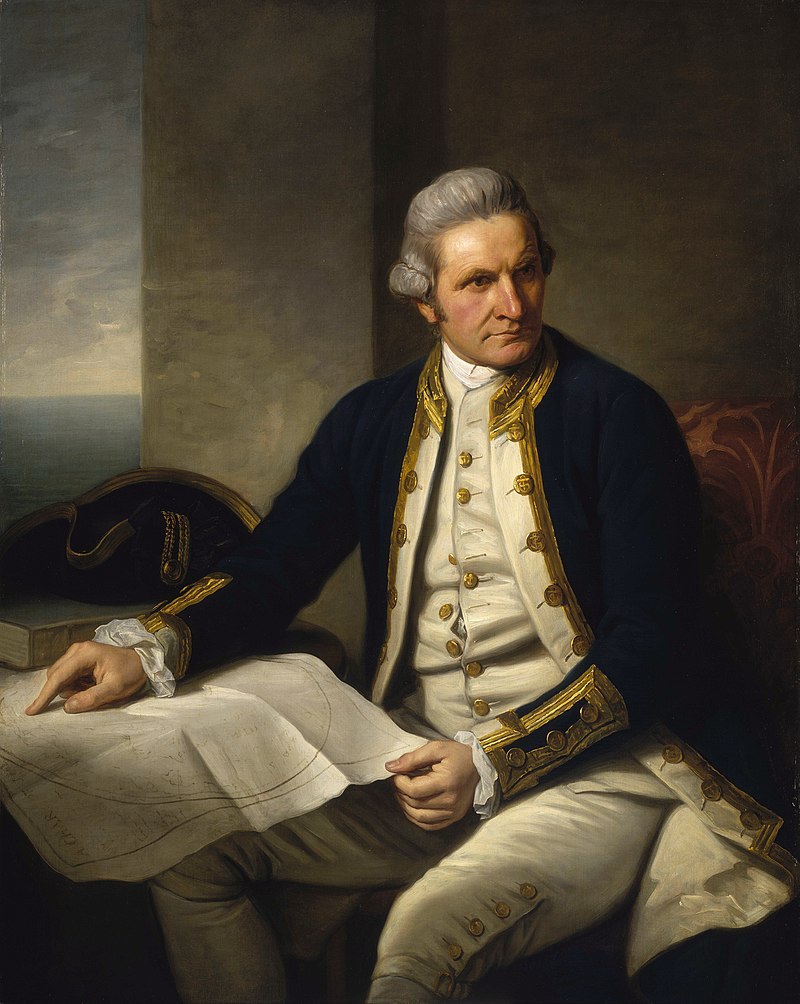Hawaii: Today in History 2/14

2-14-1779 James Cook, British explorer, navigator and cartographer, discovered and explored Australia, Pacific Islands and New Zealand for Britain, killed in a fight with Hawaiians near Kealakekua at 50

Captain James Cook FRS (7 November 1728[NB 1] – 14 February 1779) was a British explorer, navigator, cartographer, and captain in the Royal Navy. He made detailed maps of Newfoundland prior to making three voyages to the Pacific Ocean, during which he achieved the first recorded European contact with the eastern coastline of Australia and the Hawaiian Islands, and the first recorded circumnavigation of New Zealand.
Cook joined the British merchant navy as a teenager and joined the Royal Navy in 1755. He saw action in the Seven Years’ War and subsequently surveyed and mapped much of the entrance to the Saint Lawrence River during the siege of Quebec, which brought him to the attention of the Admiralty and Royal Society. This acclaim came at a crucial moment in his career and the direction of British overseas exploration, and led to his commission in 1766 as commander of HM Bark Endeavour for the first of three Pacific voyages.
In three voyages, Cook sailed thousands of miles across largely uncharted areas of the globe. He mapped lands from New Zealand to Hawaii in the Pacific Ocean in greater detail and on a scale not previously achieved. As he progressed on his voyages of discovery, he surveyed and named features, and he recorded islands and coastlines on European maps for the first time. He displayed a combination of seamanship, superior surveying and cartographic skills, physical courage, and an ability to lead men in adverse conditions.
Cook was attacked and killed in 1779 during his third exploratory voyage in the Pacific while attempting to kidnap Hawaiian chief Kalaniʻōpuʻu in order to reclaim a cutter stolen from one of his ships. He left a legacy of scientific and geographical knowledge which influenced his successors well into the 20th century, and numerous memorials worldwide have been dedicated to him.
After a month’s stay, Cook attempted to resume his exploration of the northern Pacific. Shortly after leaving Hawaii Island, however, the Resolution’s foremast broke, so the ships returned to Kealakekua Bay for repairs.
Tensions rose, and a number of quarrels broke out between the Europeans and Hawaiians at Kealakekua Bay. An unknown group of Hawaiians took one of Cook’s small boats. The evening when the cutter was taken, the people had become “insolent” even with threats to fire upon them.[58] Cook attempted to kidnap and ransom the King of Hawaiʻi, Kalaniʻōpuʻu.
The following day, 14 February 1779, Cook marched through the village to retrieve the king. Cook took the king (aliʻi nui) by his own hand and led him willingly away. One of Kalaniʻōpuʻu’s favourite wives, Kanekapolei, and two chiefs approached the group as they were heading to boats. They pleaded with the king not to go. An old kahuna (priest), chanting rapidly while holding out a coconut, attempted to distract Cook and his men as a large crowd began to form at the shore. The king began to understand that Cook was his enemy.[58] As Cook turned his back to help launch the boats, he was struck on the head by the villagers and then stabbed to death as he fell on his face in the surf.[59] He was first struck on the head with a club by a chief named Kalaimanokahoʻowaha or Kanaʻina (namesake of Charles Kana’ina) and then stabbed by one of the king’s attendants, Nuaa.[60][61] The Hawaiians carried his body away towards the back of the town, still visible to the ship through their spyglass. Four marines, Corporal James Thomas, Private Theophilus Hinks, Private Thomas Fatchett and Private John Allen, were also killed and two others were wounded in the confrontation.

